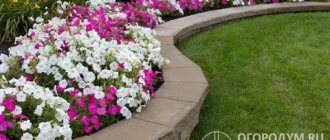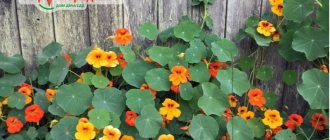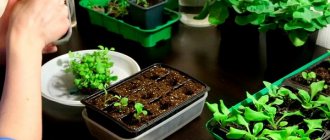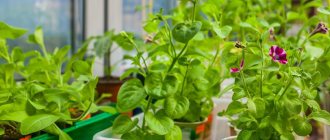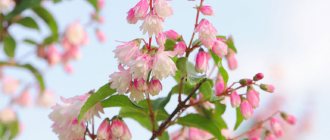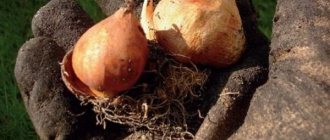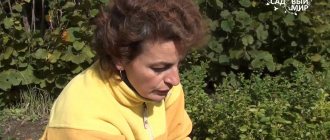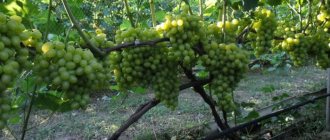Beautiful petunia fills the flower garden with bright colors all summer until the first frost. The plant is most often propagated by seeds, but this method is not always successful. Today we will talk about another possibility of obtaining strong seedlings - petunia cuttings in spring, summer and autumn.
There are several basic recommendations from gardeners on how to propagate petunias using cuttings from mother bushes. First, let's look at the pros and cons of these methods.
The growth characteristics of the flower (a long period from germination to flowering) force the gardener to grow the plant through seedlings, sowing seeds in February - March. However, it has disadvantages:
- the seeds take a long time to germinate;
- seeds are expensive;
- tender seedlings are stretched or suffer from fungal diseases.
Propagating petunia by cuttings has several advantages:
- a simple breeding method that even novice gardeners can easily master;
- new plants retain all varietal characteristics;
- Almost all cuttings take root. Young flowers bloom earlier and the root system develops quickly;
Cuttings can be carried out throughout the year.
Timing of cuttings
You can cut petunia at the end of winter - March or at the end of July - beginning of August. Seedlings harvested in spring will bloom in April-May. The shoots cut in summer survive wintering better and have a developed root system. Such plants are rooted into the ground only next spring.
There is no consensus among gardeners regarding the best time for vegetative propagation of petunias. You need to choose a period depending on the conditions for growing seedlings and the region in which the land is located. In the northern regions, it is worth taking cuttings in the summer so that they spend the winter warm. In the south, terry petunia or another variety of flower can be propagated vegetatively in the spring, by transferring the seedlings to the ground when the temperature reaches a stable temperature of at least +15 degrees.
Features of winter cuttings
If the period from late winter to early spring is chosen for growing petunia from cuttings at home, an adult plant for cuttings is prepared in the summer. The bush must meet the following requirements:
- spreading, blooming;
- flowers and leaves show no signs of disease;
- shoots are strong and dense.
Diseased plants are not suitable for propagation.
Shoots from them do not take root well. Even if the seedling takes root, there is little chance that it will not soon get sick. At the end of summer, old shoots are cut off on an adult bush, the plant is dug up with soil and placed in a container with a diameter of 15 cm. If the petunia has already grown in a container, it is rooted in a smaller pot and brought into a room with a temperature of 10-16 degrees.
Related article:
Hydrolate: floral water for beautiful skin and hair
The colder the place in which the bush will winter, the less light is required. From January, you can extend the plant's daylight hours to 12 hours using artificial lighting lamps. Water infrequently, as needed, without allowing the soil to dry out too much. Once a month, petunia is fed with fertilizers containing potassium and phosphorus. Closer to spring, nitrogen-containing preparations should be added.
At the end of February, when the flower wakes up, you can start cutting petunia at home.
How to preserve the mother plant for wintering?
Immediately after rooting the cuttings that were cut and planted in the summer, the strengthened seedlings should be transplanted into medium-sized planting containers. Be sure to fertilize with potassium and phosphorus to speed up growth and allow the plants to get stronger before the onset of cold weather.
The mother plant can be saved for wintering:
- Dig up the mother bush or transfer it from the flower pot to a smaller pot.
- The most optimal temperature for petunia at this time will be +16…+17 degrees. The lower the temperature, the less light the plant will need.
- Reduce watering, but do not allow the soil to dry out.
- Until the end of November, do not spray the plant, do not apply fertilizers, and it is also better to cancel other procedures. All the plant needs at this time is rare watering, a moderate amount of light and cool air.
- Also cut off all old shoots from the bush so that the bush does not waste its energy and nutrition on them.
- At the end of November, the gradual awakening of the plant will begin. To all the observed conditions of detention, you need to add additional lighting (fluorescent lamps are quite suitable). Don't change the temperature.
- At the beginning of January, the plant will finally enter the phase of active awakening. During this period, daylight hours should last at least 16 hours. Nitrogenous fertilizing should be applied at this time (once every 14 days) so that the root system and green part feel normal.
How to preserve the mother plant until spring in the video:
Summer cuttings
The advantage of propagating flowers in the summer is that the plant has time to take root well and overwinter without problems. This period is also suitable for growing bushes that can bloom indoors until late autumn. If you plan to plant in the ground by next spring, you can grow full-fledged spreading bushes from cuttings for propagating petunia. They can be used to produce young shoots for spring rooting.
Planting material is collected in August. For a faded mother plant of a bush type, leave 15 cm of stem. To obtain cuttings, ampelous petunia is cut to half. Further rooting is possible in any way.
Rooting methods
Cut cuttings are planted in soil, water, vermiculite or hydrogel, or peat bags. Each method has its own characteristics.
In the ground
To root in the ground, the top of a stem up to 8 cm long is cut off from an adult bush at an angle of 45 degrees. The two top sheets are shortened by half: this way less moisture evaporates from them. The resulting shoot is dipped into a solution with a root stimulator, for example, “Kornevin”. To prevent the cut from becoming a “gate” for fungal infections, it is sprinkled with activated carbon powder or dipped in a weak solution of potassium permanganate.
Related article:
How to prune geraniums for lush flowering
Within an hour, the harvested seedlings are planted in containers with a drainage hole: plastic cups or parts of bottles, peat pots. The containers are filled with soil composition at the rate of 2 parts of garden soil from the place where the mother bush grows, 1 part of peat and sand each. Drainage made of fine expanded clay, crushed ceramics or broken brick is laid at the bottom. To maintain moisture and loosen the soil, add perlite or vermiculite.
Before planting, the soil is disinfected in one of the following ways:
- pour boiling water or manganese solution;
- subjected to heat treatment in a frying pan or in the oven;
- pour copper sulfate (1 tbsp per 10 liters of water).
The shoots are deepened into the soil by a third. Containers with seedlings are placed in partial shade at a temperature of +20 degrees. If necessary, the greenhouse can be covered with polyethylene or a transparent lid. Within 2 weeks, the roots lengthen, then the shoots begin to produce new leaves. For the normal development of plants, they require careful care:
- Sufficient lighting. In spring, you can place the seedlings on the windowsill, extending the daylight hours to 12-16 hours with the help of a lamp. If the sun is too hot, containers with shoots are placed in partial shade.
- Moderate hydration. Water the petunias as the soil dries. Spraying every other day is also required. If the greenhouse is covered, it is ventilated 1-2 times a day for 5-10 minutes. The older the seedlings, the less shelter they require. 2-3 weeks before planting, the film or cover is completely removed.
- Feeding. When the cuttings begin to grow green mass, they are fertilized with phosphorus-based preparations.
- Topping. Before planting petunia cuttings in the garden bed, pinch the plant. The first time the procedure is carried out after the appearance of 4-6 leaves, the second - after another 2 weeks.
This is interesting: Planting viola
Petunia cuttings prepared in this way are ready for planting in large containers or soil. Now they can be placed in a permanent place if the daytime temperature does not fall below 15 degrees. The plants will bloom closer to April-May.
Related article:
Colchicum autumn flower
Rules for the procedure
In order to obtain strong and high-quality planting material, you need to take care of the health of the mother plant long before propagation:
- In order for the mother bush to actively grow and bloom luxuriantly, you need to regularly add organic fertilizers and mineral mixtures to the soil.
- Trim cuttings correctly. If you choose sickly or too thin shoots for planting, then do not expect them to grow into a healthy and strong plant.
- Cut cuttings only with specialized sharp instruments, having previously treated them with antiseptic compounds.
- When cutting, remember that the mother plant should receive a minimum of damage. So proceed carefully, take only the required number of cuttings at the desired length.
- Choose planting containers of the appropriate size. The right pot will help petunia adapt faster and begin to grow a root system. A container that is too small can cause stunted growth and development, as well as a lack of flowering.
- Soil for petunias is very important. The correct soil mixture will give the plant the opportunity to breathe and grow at the right pace. In addition, a high-quality substrate provides additional nutrition for seedlings and prevents liquid stagnation. It is best to purchase ready-made soil for petunias in the store.
- You cannot use soil for cuttings several times.
- The required level of humidity must be achieved using a small greenhouse. For example, using half a plastic bottle.
- Moisten the soil not by watering, but by spraying. Spray the mixture sparingly, but every day.
- The standard temperature for normal seedling growth is between +16 and +24 degrees.
- For growing, it is best to choose places with partial shade. In winter, petunias require at least 10 hours of daylight.
- Pinch out the seedlings in a timely manner to get a lush flowering bush.
In water
After pruning, petunia cuttings can be rooted not only in soil, but also in water. This method is very similar to the previous one, but has some features:
- Cuttings 10-12 cm long are cut using the method described above.
- The seedlings are placed in an opaque container with water at room temperature. For 2 shoots, 1 glass of liquid is enough. Kornevin is added to the water according to the instructions and 2 tablets of activated carbon to prevent rotting.
- The containers are placed in a well-lit place. The settled water is added as it evaporates to the previous level. There is no need to change the fluid.
After 7-10 days the first roots will appear. Now the petunia cuttings can be planted in pots with soil, as described above.
In vermiculite or hydrogel
To create optimal conditions for plant growth, some gardeners use vermiculite (a layered mineral in the form of plate-like crystals) or hydrogel (a polymer that absorbs large amounts of water with dissolved fertilizers). These materials create sufficient air and moisture flow to the root system.
The procedure for planting in vermiculite:
- The raw materials are laid out in a container with a drainage hole in a layer of 3-5 cm and filled with water.
- The shoot is planted in vermiculite and covered with polyethylene.
- Care involves regular airing for 15 minutes a day, eliminating excess moisture on the film.
When the roots become branched, the flowers are transplanted into a large container with soil. The principle of rooting shoots in hydrogel is similar.
In peat bags
Peat tablets are often used for planting shoots by pouring boiling water over them, adding water as they are absorbed. When the tablets take the form of bags, they are cooled.
- The shoot is planted in a bag, immersed 2-3 cm inside.
- The flowers are covered with film, aired every day for 15 minutes.
- As the peat dries, water the plants, preventing liquid from getting on the leaves.
Related article:
Grandma's tips for indoor flowers
When growing green mass, petunias are planted in a large container with soil.
Caring for petunia in winter
The plant is cared for in the same way as in open ground. The flower is placed on the eastern window, providing additional lighting on the darkest days of winter.
Watering petunias is necessary regularly, but excess moisture should not be allowed. It is especially important not to overwater the plant if the room temperature is +18 degrees. Water for irrigation should be at room temperature. It is useful to use melt water for irrigation. As a measure to prevent the appearance of rot, watering with clean water is alternated with watering with a pink solution of potassium permanganate.
Fertilizing with mineral fertilizers for flowers (Kemira, Fertika) is applied every 2 weeks only to pots with flowering bushes. Plants that are not flowering are not fed. Preference should be given to phosphorus-potassium fertilizers.
The advantage of propagation by cuttings
Petunia is propagated not only by shoots, but also by seeds. But cuttings as a method of growing plants have a number of advantages:
- a cheap way to obtain an exact copy of an adult bush;
- the ability to choose strong shoots;
- rapid growth of the root system, which accelerates flowering;
- unpretentiousness in care: cuttings “tolerate” gardener’s mistakes more easily than seedlings grown from seeds;
- saving money, since this method of propagation is cheaper than buying seeds.
Cuttings require careful care of the shoots. But this method of reproduction is simpler and more economical.
What varieties are suitable for this?
The vegetative propagation method is suitable for virtually all varieties, especially terry ones. There are varieties that never produce seeds - this is a hybrid petunia - propagation by cuttings is the only possible way to increase the number of crops. In addition, this method is easier than sowing; the survival rate of young seedlings after cuttings is 99.9%.
Not long ago, Japanese breeders developed a new variety of ampelous petunia, which is propagated exclusively by cuttings. This will be interesting to know for those fans of this culture who follow new products. The name of this variety is Surfinia.
